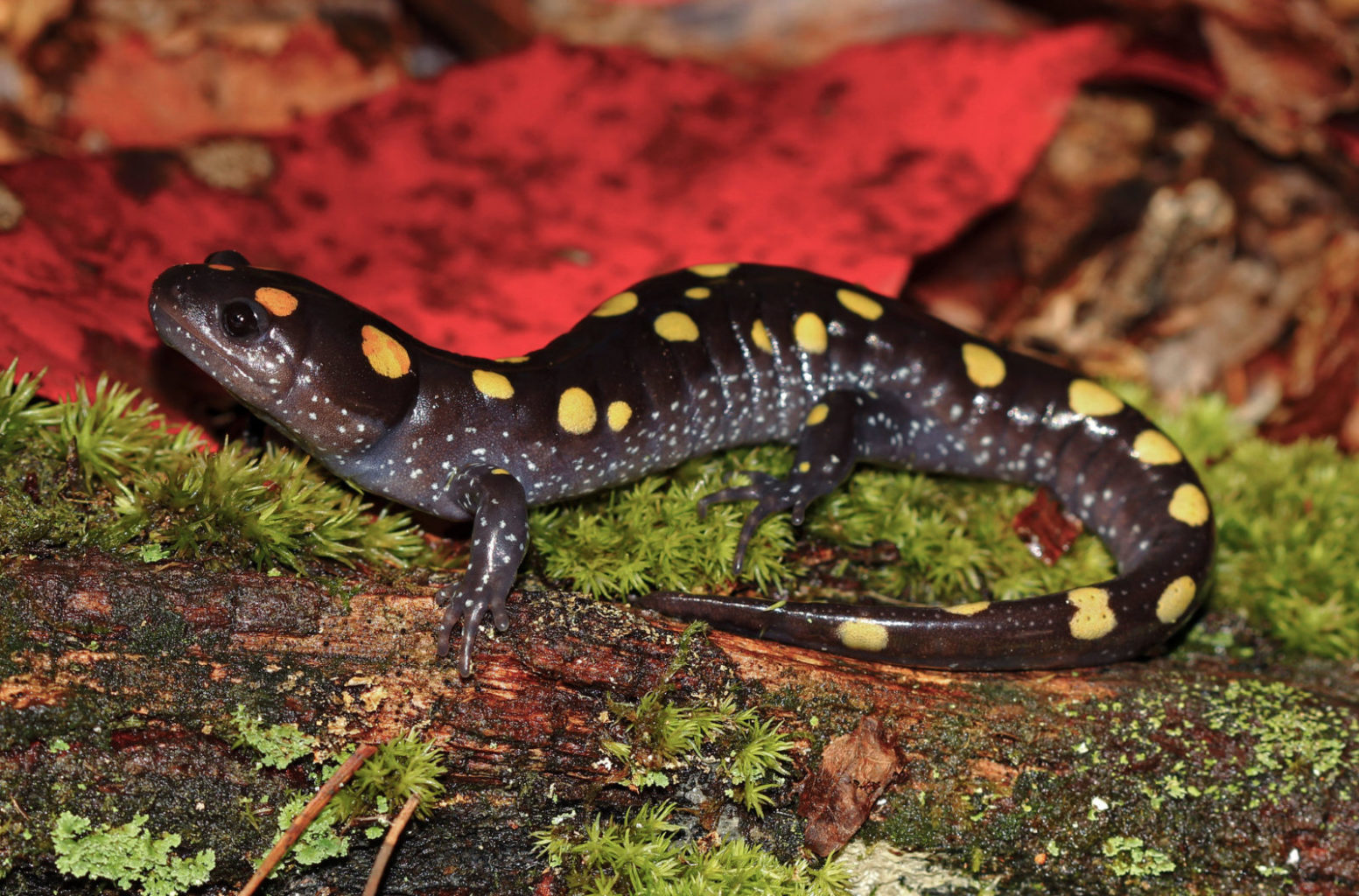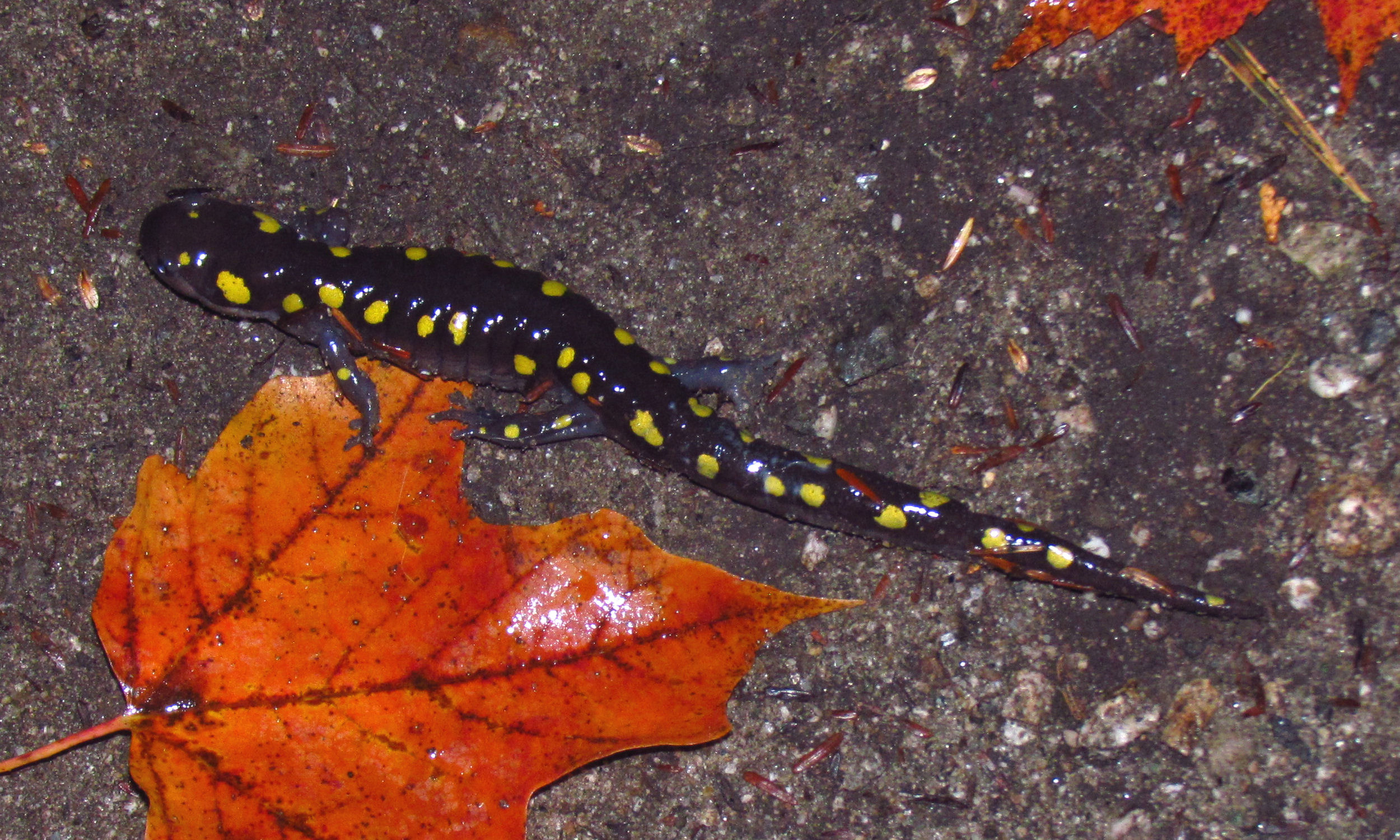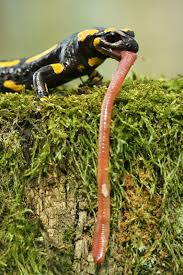The spotted salamander (Ambystoma maculatum) is a species of salamander native to eastern North America.

Here are some key details about the spotted salamander:
- Appearance: The spotted salamander is a medium-sized salamander that typically grows between 6 to 9 inches (15 to 23 centimeters) in length. It has a stout body with a broad, rounded snout. Its coloration varies, but it generally has a black or dark brown body with vibrant yellow or orange spots scattered across its back and sides.
- Habitat: Spotted salamanders can be found in a variety of habitats, including deciduous forests, woodlands, and wetlands. They prefer areas with access to vernal pools or other temporary bodies of water, as they rely on these for breeding.

3. Breeding Behavior: Spotted salamanders are known for their unique breeding behavior. They migrate to breeding sites, typically vernal pools, during the spring, often during rainy nights. After mating, females lay clusters of eggs attached to submerged vegetation. The larvae hatch and develop in the water, undergoing a metamorphosis before transitioning to terrestrial life.
4. Diet: Spotted salamanders are nocturnal predators that primarily feed on invertebrates such as insects, spiders, worms, and small crustaceans. They have a sticky tongue they use to catch their prey.

5. Conservation: The spotted salamander is considered a species of least concern in terms of conservation status. However, habitat loss, pollution, and fragmentation can pose threats to their populations. Efforts to protect and preserve their breeding habitats, such as vernal pools, are important for their long-term survival.
The spotted salamander is a fascinating amphibian that plays a crucial role in its ecosystem. Its striking appearance and unique breeding behavior make it a subject of interest for researchers and nature enthusiasts alike.